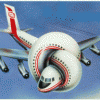
Sign in to follow this
Followers
0

DX11, New Terrain engine, Tesselation- Scenery Dev
By
ErichB, in The Prepar3d Forum


By
ErichB, in The Prepar3d Forum